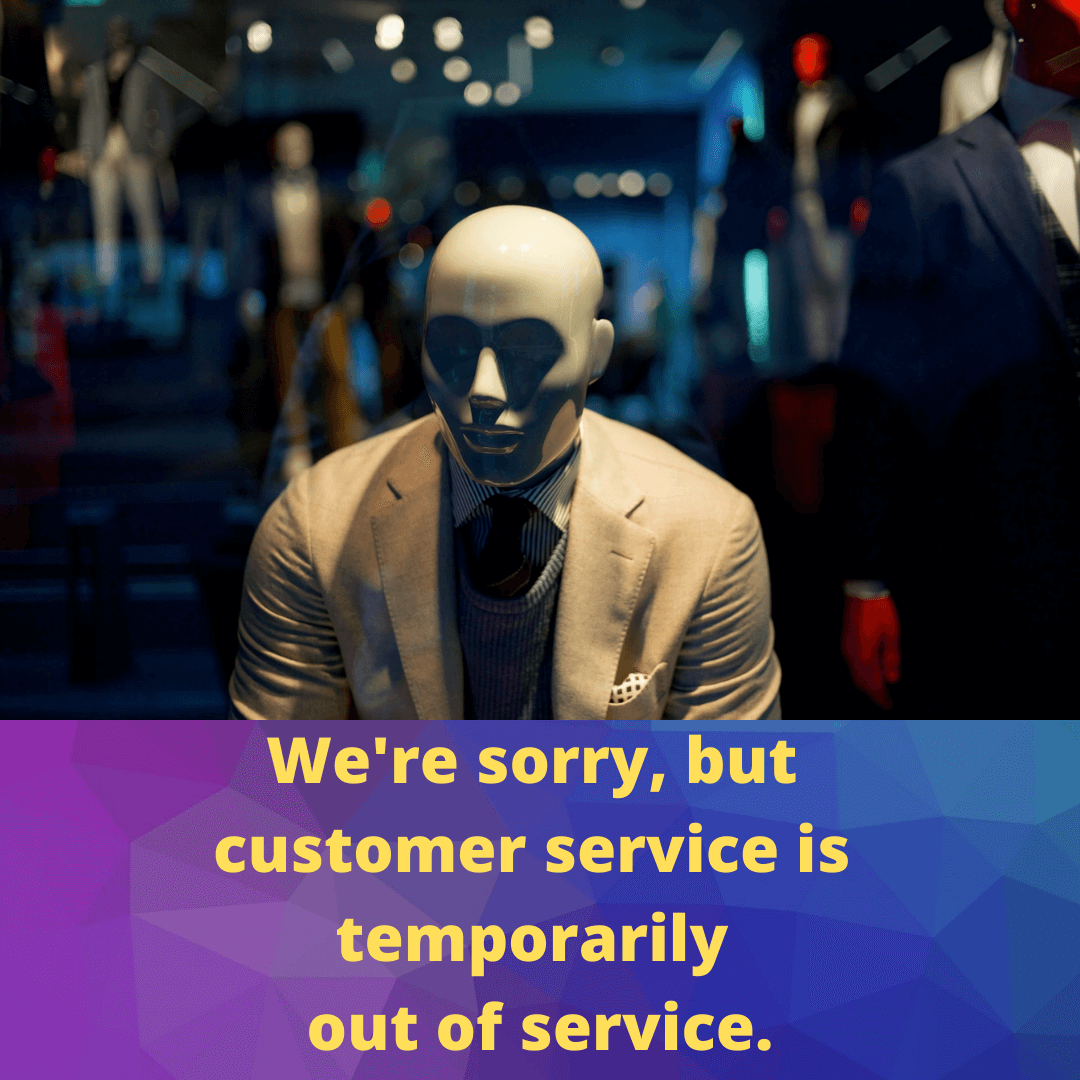I’ll admit it. I am one tough customer. Why shouldn’t I be? Because I also am one very good customer.
I’m no different from anyone who regularly patronizes a place of business, spending a considerable amount of money, and naturally likes to be treated not just as another customer, but as a loyal customer.
A good customer’s lifetime value to a business reaches beyond his or her own transactions. Good customers are prone to recommend their favorite shopping stops to others. And word-of-mouth is both the oldest and the most effective form of advertising for a business.
If I like a place and derive satisfaction from shopping or eating there, I’m happy to help them by spreading the word.
Lately, though, I am not feeling the love from some of the places where I’m a regular, and I suspect you are having a similar experience. Anywhere I go, it’s as if nobody knows anything. If that sounds like hyperbole, have you been out and about much?
The intimacy and familiarity that are a big part of the customer experience for a constant customer like me has gone AWOL. Using the easy excuse of the pandemic — and it is an excuse — lethargy in the retail ranks has become the rule rather than the exception.
CUSTOMER SERVICE IS OUT OF SERVICE
These days, I half expect to see signs that say, “We’re sorry, but customer service currently is out of service. Better luck next time.”
The explanation for this turn of events is clear and simple: retail businesses — restaurants especially, but all kinds of shops — lost longtime staff to Covid and to stimulus checks that exceeded paychecks in dollars. Not working perversely became its own reward! Why work when you can get paid better sitting at home?
The result is a severe shortage of competent workers who are knowledgeable about the product or service they represent.
You see it in shops where technical knowledge is taken for granted by customers, like a Best Buy or a Verizon store. Their expertise is the whole point of their value proposition, yet those places now employ associates who don’t know much more about what they’re selling and supporting than the person who’s buying. They’re being thrown into the job without learning the tricks of the trade.
Case in point: A Verizon store worker couldn’t figure out how to perform a basic task on my Verizon phone … and then suggested I take it to Best Buy!
STRANGERS IN A STRANGE LAND
Those familiar faces behind the counter who knew and pampered their employers’ best customers have vanished. When we go shopping now, it’s like we’re strangers in a strange land. And it’s as if the people there to help us are like robots whose resting face is a blank stare.
The same blank stare syndrome even can be sensed when speaking on the phone with a customer service representative halfway across the world.
You see the malaise too in fast food franchises, where it can take an inordinate length of time to pay for a simple order because the cashier is laboring over how to ring it up.
Don’t get me wrong. The new workers, who replaced the workers who knew me as soon as I walked through the door, are trying hard in many cases.
They are not the problem. They are under-trained, to the extent that they are trained at all. If we can train computers to perform complex tasks through artificial intelligence, how about training humans to perform simple tasks?
The responsibility for this sorry state of affairs lies squarely with the employer. Without basic training as a core commitment in a company’s code of best practices, we are losing standards of excellence and tolerating mediocrity in the workforce.
TRAINING HAS BEEN SIDETRACKED
The training crisis is not at all restricted to the retail sector.
A relative of mine noted how feeling isolated in her office job has resulted in an ironic epiphany: By fending for herself, without any input from her supervisor, who also is not benefiting from job development, she realizes that she’s actually passing him in capability (if not in compensation, a disparity that leads to leaving for a better opportunity).
The accountability starts where it always starts — at the top of the pyramid.
If you run a business, ask yourself, “Are we spending enough time training people once we find them to hire them?”
If you work for someone, ask yourself, “Am I being trained constantly and adequately enough to do my job better and to serve the customer better?”
Whichever role you’re in, which steps are necessary in getting back on the training horse that management and workers have fallen off?
Nothing is more important than a Return to Office (RTO). I’m a hard-liner on that, and admire the strong stance trumpeted by one of the most successful and influential business leaders in the world — JPMorgan Chase CEO Jamie Dimon.
REMOTE POSSIBILITIES
Yet, even as you read this, because of the still-new Omicron Covid variant, megabrands from Apple and Ford to CNN and Google keep pushing back their RTO dates.
Whatever the RTO date ends up being for companies, it doesn’t mean they can’t empower their Human Resources department right now to formulate training programs that are in place when RTO hits full stride.
And what about training people remotely? If a company and its employees believe that workers can be productive working from home, why not conduct training sessions that way. In the example I used about my relative, that clearly was not being done. Out of sight, out of mind.
It’s not a healthy business environment for workers like her to be “siloed,” keeping them sequestered while also not helping to expand their skill sets. Left to their own devices, what kind of qualitative feedback are those workers getting from their supervisors? Who is mentoring them?
LONG LINES SEND CUSTOMERS ONLINE
Not properly training new workers, as well as not re-training and not up-training legacy workers, disaffects more than your best customers, who could become your ex-customers. It also holds back the growth of your workers, whose loyalty to your business will be as weak or as strong as your loyalty is to their professional betterment.
We have a crisis in training that needs to be addressed and fixed ASAP. If not, e-commerce will look even more appealing to consumers than it already does.
Needless to say, bricks-and-mortar merchants can’t afford to give customers another reason to shop online due to rising dissatisfaction with customer service in stores while waiting in line.
(Photo by Will H McMahan on Unsplash)

